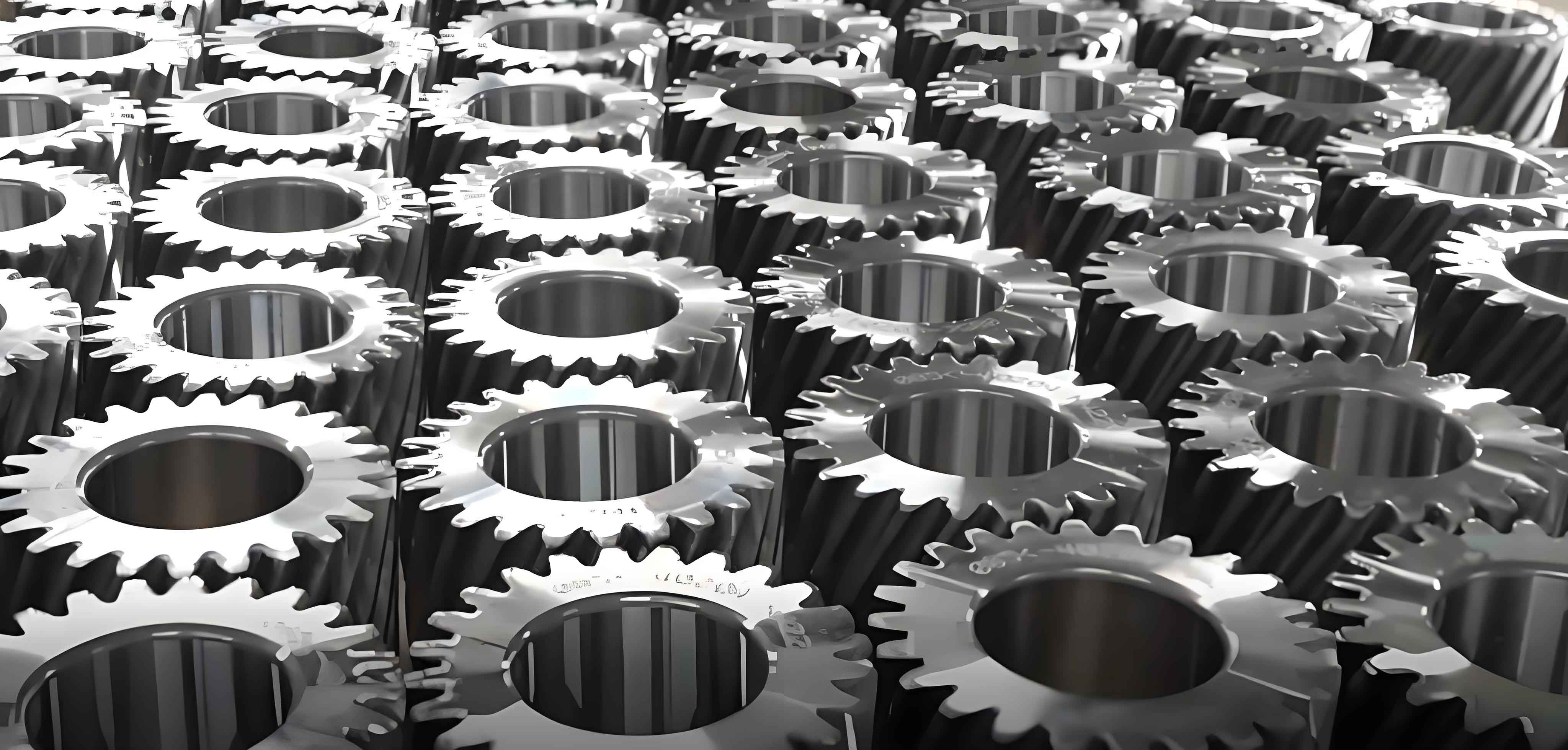Spur gear is fundamental components in a wide range of mechanical systems. Their straightforward design, with teeth cut straight and parallel to the gear’s axis, makes them highly efficient and easy to manufacture. However, optimizing the design of spur gear for enhanced efficiency and performance requires careful consideration of various factors, including materials, geometry, and manufacturing techniques. This article explores strategies and innovations in spur gear design aimed at improving their efficiency and performance.

Material Selection for Spur Gear
The selection of appropriate materials is crucial in spur gear design, as it impacts the gear’s strength, durability, and overall performance. Advanced materials offer significant benefits over traditional materials like steel and cast iron.
1. Carbon Fiber-Reinforced Polymers: These materials provide a high strength-to-weight ratio and excellent fatigue resistance, making them ideal for lightweight applications requiring high performance.
2. High-Strength Steels: Modern high-strength steels offer superior wear resistance and durability, essential for heavy-load and high-stress applications.
3. Aluminum Alloys: Aluminum alloys are favored for their lightweight properties and good strength, suitable for applications where weight reduction is critical.
4. Sintered Metals: Powder metallurgy allows for the production of sintered metal gears with uniform material properties and precise dimensions, improving reliability and performance.
Table 1: Comparison of Spur Gear Materials
| Material | Strength-to-Weight Ratio | Fatigue Resistance | Wear Resistance | Application Examples |
|---|---|---|---|---|
| Carbon Fiber-Reinforced Polymer | High | Excellent | Good | Aerospace, Automotive |
| High-Strength Steels | Moderate | High | Excellent | Heavy Machinery, Industrial Equipment |
| Aluminum Alloys | High | Moderate | Good | Automotive, Consumer Electronics |
| Sintered Metals | Moderate | High | Very Good | Precision Instruments, Small Engines |
Geometric Optimization of Spur Gear
The geometry of spur gear, including tooth profile, pressure angle, and helix angle, plays a critical role in determining their efficiency and performance.
1. Tooth Profile: Optimizing the tooth profile can reduce stress concentrations and improve load distribution, leading to enhanced efficiency and longevity. The involute profile is the most common, offering smooth and efficient power transmission.
2. Pressure Angle: The pressure angle, typically 20 or 25 degrees, affects the gear’s strength and the smoothness of operation. A higher pressure angle increases load-carrying capacity but may result in higher friction and noise.
3. Helix Angle: While spur gear traditionally have straight teeth, incorporating a slight helix angle can improve meshing characteristics and reduce noise, albeit at the cost of increased axial thrust.
List: Key Geometric Considerations for Spur Gear
- Tooth Profile Optimization: Enhances load distribution and reduces stress.
- Pressure Angle Selection: Balances load-carrying capacity with smoothness of operation.
- Helix Angle Incorporation: Improves meshing and reduces noise, with a trade-off in axial thrust.
Table 2: Geometric Parameters and Their Effects
| Parameter | Effect on Performance | Typical Values | Impact on Efficiency |
|---|---|---|---|
| Tooth Profile | Load Distribution, Stress Reduction | Involute | High |
| Pressure Angle | Load Capacity, Smoothness | 20°, 25° | Moderate |
| Helix Angle | Noise Reduction, Meshing Improvement | 0° (straight), 15° | Variable |
Manufacturing Techniques for Enhanced Spur Gear Performance
Advanced manufacturing techniques have been developed to produce spur gear with higher precision and improved performance characteristics.
1. CNC Machining: Computer Numerical Control (CNC) machining enables the production of spur gear with extremely tight tolerances and complex geometries, enhancing precision and consistency.
2. Gear Hobbing: Gear hobbing is a versatile and efficient method for producing high-quality spur gear. Recent advancements in multi-axis hobbing machines have further improved accuracy and production speed.
3. Additive Manufacturing: Additive manufacturing, or 3D printing, allows for the creation of complex gear geometries and rapid prototyping. This technology is particularly useful for custom and low-volume gear production.
4. Surface Finishing: Advanced surface finishing techniques, such as superfinishing and hard coatings, reduce friction and wear, enhancing the efficiency and lifespan of spur gear.
Table 3: Advanced Manufacturing Techniques
| Technique | Precision Level | Production Speed | Complexity Handling | Cost | Typical Applications |
|---|---|---|---|---|---|
| CNC Machining | Very High | Moderate | High | High | Aerospace, Automotive |
| Gear Hobbing | High | Fast | Moderate | Moderate | Industrial Machinery, Robotics |
| Additive Manufacturing | High | Slow | Very High | Variable | Prototyping, Custom Gears |
| Surface Finishing | High | Moderate | High | Moderate | High-Speed, High-Load Gears |
Enhancing Efficiency through Lubrication and Cooling
Proper lubrication and cooling are essential for maintaining the efficiency and performance of spur gear, particularly in high-speed and high-load applications.
1. Lubrication: Using the right lubricant reduces friction and wear, preventing overheating and extending the gear’s operational life. Synthetic lubricants often provide superior performance compared to conventional oils.
2. Cooling Systems: Incorporating cooling systems can prevent overheating in high-load applications, maintaining optimal operating temperatures and improving gear performance.
List: Benefits of Lubrication and Cooling
- Reduced Friction: Proper lubrication minimizes friction between gear teeth, enhancing efficiency.
- Wear Prevention: Lubricants protect gear surfaces from wear, extending lifespan.
- Heat Management: Cooling systems prevent overheating, maintaining performance and preventing thermal damage.
- Maintenance Reduction: Effective lubrication and cooling reduce the need for frequent maintenance and downtime.
Conclusion
Optimizing spur gear design for enhanced efficiency and performance involves a comprehensive approach that includes selecting advanced materials, optimizing geometric parameters, employing precise manufacturing techniques, and ensuring proper lubrication and cooling. By considering these factors, engineers can design spur gear that offer superior performance, durability, and efficiency, meeting the demands of modern mechanical systems. As technology continues to advance, further innovations in spur gear design are expected, driving even greater efficiencies and capabilities in a wide range of applications.
